
A role-playing game is a game in which players assume the roles of characters in a fictional setting. Players take responsibility for acting out these roles within a narrative, either through literal acting or through a process of structured decision-making regarding character development. Actions taken within many games succeed or fail according to a formal system of rules and guidelines.
A fighting game is a genre of video game that involves combat between two or more characters. Fighting game combat often features mechanics such as blocking, grappling, counter-attacking, and chaining attacks together into "combos". Characters generally engage in battle using hand-to-hand combat—often some form of martial arts. The fighting game genre is related to, but distinct from, the beat 'em up genre, which pits large numbers of computer-controlled enemies against one or more player characters.
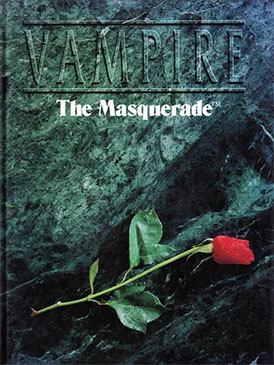
Vampire: The Masquerade is a tabletop role-playing game created by Mark Rein-Hagen and released in 1991 by White Wolf Publishing as the first of several Storyteller System games for its World of Darkness setting line. It is set in a fictionalized "gothic-punk" version of the modern world where players assume the role of vampires, who are referred to as "Kindred." and deal with their night-to-night struggles against their own bestial natures, vampire hunters, and each other.
In tabletop games and video games, a character class is an occupation, profession, or role assigned to a game character to highlight and differentiate their abilities and specializations.
The Storytelling System is a role-playing game system created by White Wolf, Inc. for the Chronicles of Darkness, a game world with several pen and paper games tied in. The Storytelling System is largely based on the Storyteller System, the rule set used for White Wolf's other, older game setting, the World of Darkness.
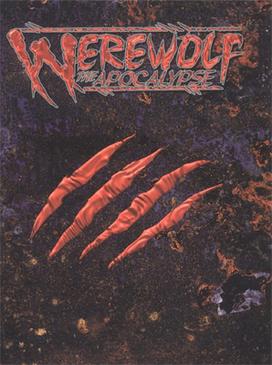
Werewolf: The Apocalypse is a role-playing game of the Classic World of Darkness game series by White Wolf Publishing. Other related products include the collectible card games named Rage and several novels. In the game, players take the role of werewolves known as "Garou". These werewolves are locked in a two-front war against both the spiritual desolation of urban civilization and supernatural forces of corruption that seek to bring the Apocalypse. Game supplements detail the other shape-shifters.

Kindred of the East is a tabletop role-playing game book and game line released by White Wolf Publishing in February 1998 for use with their horror game Vampire: The Masquerade. It is part of the World of Darkness series, and is the first and main entry in the Year of the Lotus line of Asia-themed books released throughout 1998.
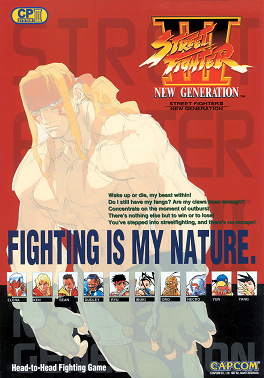
Street Fighter III: New Generation is a fighting game in Capcom's Street Fighter series, originally released as a coin-operated arcade game in 1997. The game's name as it appears on the cabinet is Three: A New Generation of Street Fighters. Street Fighter III was produced for the CD-ROM-based CP System III hardware, which allowed for more elaborate 2D graphics than the CPS II-based Street Fighter Alpha games, while revamping many of the play mechanics. The game, which was designed as a direct sequel to Street Fighter II, initially discarded every previous character except for Ryu and Ken, introducing an all-new roster led by Alex. Likewise, a new antagonist named Gill took over M. Bison's role from the previous games as the new boss character.
Gun fu, a portmanteau of gun and kung fu, is a style of sophisticated close-quarters gunfight resembling a martial arts battle that combines firearms with hand-to-hand combat and traditional melee weapons in an approximately 50/50 ratio. It can be seen in Hong Kong action cinema, and in American action films influenced by it.

HoL is a role-playing game created by Dirt Merchant Games and produced by Black Dog Game Factory, a subsidiary of White Wolf which produced adult oriented RPGs. The HoL Core Rulebook was published in 1994, and was followed up by one other supplement Buttery Wholesomeness in 1995. Although HoL is playable, it was meant as a satire of RPGs. The pages of the books are written by hand, and the authors freely take stabs at other popular role-playing games, particularly Vampire: The Masquerade and Dungeons & Dragons, and those who play them.

Fatal Fury 2, known as Garō Densetsu 2: Aratanaru Tatakai in Japan, is a 1992 fighting video game released by SNK for the Neo Geo arcade and home platforms, and later ported to several other home systems. It is the sequel to Fatal Fury: King of Fighters (1991) and the second game in the Fatal Fury franchise. Its updated version, Fatal Fury Special, was released in 1993.

Savage Worlds is a role-playing game written by Shane Lacy Hensley and published by Pinnacle Entertainment Group. The game emphasizes speed of play and reduced preparation over realism or detail. The game received the 2003 Origin Gamers' Choice Award for best role-playing game.
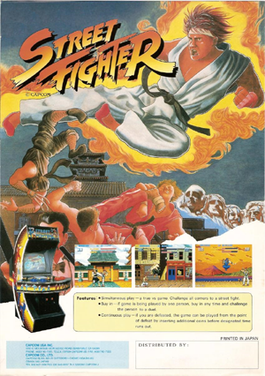
Street Fighter is a 1987 arcade video game by Japanese developer and publisher Capcom. It is the first competitive fighting game produced by the company and the first installment in the Street Fighter series. It was a commercial success in arcades and introduced special attacks and some of the conventions made standard in later fighting games, such as the six-button controls and the use of command-based special moves.

Fatal Fury: King of Fighters, known as Garō Densetsu: Shukumei no Tatakai in Japan, is a 1991 head-to-head fighting game released by SNK for the Neo Geo arcade and home platforms. Fatal Fury was SNK's first fighting game for the Neo Geo system and served as the inaugural game in their Fatal Fury series, as well as the first game to depict the fictional "King of Fighters" tournament, which became the basis for the later The King of Fighters games.

The Buffyverse role-playing games - the Buffy the Vampire Slayer and Angel role-playing games - are complementary, officially licensed role-playing games (RPGs) published by Eden Studios, Inc. The Buffy the Vampire Slayer Core Rulebook was published in 2002, while the Angel Corebook followed in 2003. Both games use a streamlined version of Eden Studios' popular Unisystem game engine, also featured in CJ Carella's WitchCraft and All Flesh Must Be Eaten, two of Eden's better-known original product lines. In both games, players are able to take on the roles of characters from the respective television series or create wholly original characters as they and their group see fit, effectively building their own Buffyverse series in the process.

Battle K-Road (バトルクロード) is a one-on-one fighting arcade game developed by Psikyo in 1993 and released as well as published under Jaleco's partnership in Japan for the arcades in 1994.
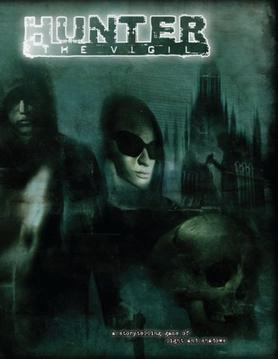
Hunter: The Vigil is a tabletop role-playing game originally published by White Wolf Publishing on August 14, 2008, and is the sixth game in their game series Chronicles of Darkness – a reboot of the World of Darkness series. Led by a storyteller, players take the roles of people who have learned of the existence of the supernatural, and fight back against monsters as groups of hunters.
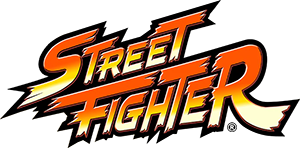
Street Fighter is a Japanese media franchise centered on a series of fighting games developed and published by Capcom. The first game in the series was released in 1987, followed by six other main series games, various spin-offs and crossovers, and numerous appearances in other media. Its best-selling 1991 release Street Fighter II established many of the conventions of the one-on-one fighting genre.
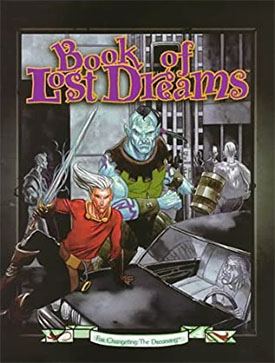
Book of Lost Dreams is a tabletop role-playing game supplement published by White Wolf Publishing in September 1997 for use with the horror game Changeling: The Dreaming, and is part of the World of Darkness series. It introduces expanded rules for cantrips and combat, describes creatures from other World of Darkness games to aid cross-over play, and contains the adventure "Capture the Flag". The book was released together with a storyteller screen, which contains rules information and tables for storytellers to reference while running a campaign. The book was well received by critics, who considered "Capture the Flag" a good way to introduce players to the Changeling: The Dreaming setting.















